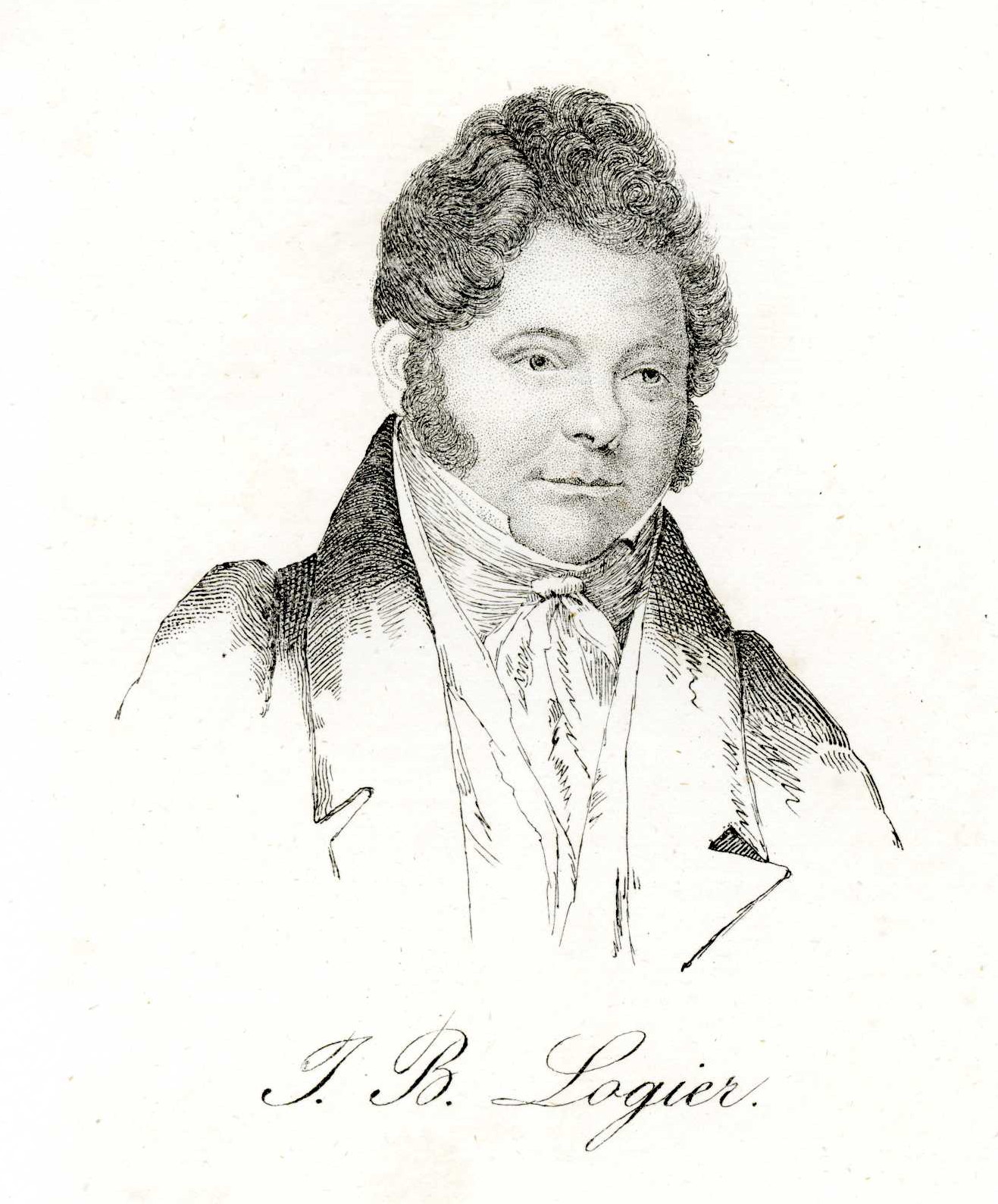Johann Bernhard Logier on:
[Wikipedia]
[Google]
[Amazon]
 Johann Bernhard Logier (9 February 1777 – 27 July 1846) was a German composer, teacher, inventor, and publisher resident in Ireland for much of his life.
Johann Bernhard Logier (9 February 1777 – 27 July 1846) was a German composer, teacher, inventor, and publisher resident in Ireland for much of his life.
''System of the Science of Music, Harmony, and Practical Composition''
in both English and German editions (''System der Musik-Wissenschaft und der praktischen Composition mit Inbegriff dessen, was gewöhnlich unter dem Ausdrucke General-Bass verstanden wird''). This textbook of music theory and harmony was widely used and reprinted throughout the nineteenth century. His 1813 ''Introduction to the Art of Playing on the Royal Kent Bugle'' was the first text on that instrument.
 Johann Bernhard Logier (9 February 1777 – 27 July 1846) was a German composer, teacher, inventor, and publisher resident in Ireland for much of his life.
Johann Bernhard Logier (9 February 1777 – 27 July 1846) was a German composer, teacher, inventor, and publisher resident in Ireland for much of his life.
Biography
Logier was born inKassel
Kassel (; in Germany, spelled Cassel until 1926) is a city on the Fulda River in northern Hesse, Germany. It is the administrative seat of the Regierungsbezirk Kassel and the district of the same name and had 201,048 inhabitants in December 2 ...
and was first taught music by his father, a violinist. He moved to the England in 1791 and joined the Duke of Abercorn's regimental band as a flutist, later becoming director. After moving to Ireland with the regiment in 1802, he was appointed organist in Westport and in 1808 became director of the band of the Kilkenny Militia. In 1809 he became the musical director of the Royal Hibernian Theatre, before opening a successful music shop at 17 Lower Sackville Street (today: O'Connell Street
O'Connell Street () is a street in the centre of Dublin, Ireland, running north from the River Liffey. It connects the O'Connell Bridge to the south with Parnell Street to the north and is roughly split into two sections bisected by Henry ...
). Except for a three-year stay in Berlin
Berlin is Capital of Germany, the capital and largest city of Germany, both by area and List of cities in Germany by population, by population. Its more than 3.85 million inhabitants make it the European Union's List of cities in the European U ...
(1822–26), he spent the remainder of his life in Dublin
Dublin (; , or ) is the capital and largest city of Ireland. On a bay at the mouth of the River Liffey, it is in the province of Leinster, bordered on the south by the Dublin Mountains, a part of the Wicklow Mountains range. At the 2016 ...
, where he died in 1846.
Logier invented the Chiroplast, a sliding frame meant as a pedagogical device to guide the hands and fingers while playing the piano, the intention being to improve and control the position of the hand and wrist. By staging public demonstrations of the mechanism and producing publications and studies to support his theories, the method became very popular within a short period of time. By having the system patented, he could earn license fees from every teacher who used the method. "Chiroplast instruction centres" opened in Dublin, London, Paris, Berlin, Leipzig, and Dresden. The system had ardent followers and critics, with Kalkbrenner and Spohr among the more prominent followers. Green's music shop in London had sold 1,600 chiroplasts by 1824.
He also developed his own teaching method, later called the Logierian System of Musical Education, which he published in a series of pamphlets and instruction books beginning with ''An Explanation and Description of the Royal Patent Chiroplast or Hand-Director'' (1816). In this method, several pupils are taught at a time, with technical instruction done together with instruction in principles of harmony
In music, harmony is the process by which individual sounds are joined together or composed into whole units or compositions. Often, the term harmony refers to simultaneously occurring frequencies, pitches ( tones, notes), or chords. Howev ...
. Logier's approach laid the basis of group teaching in music.
In 1827 Logier published hi''System of the Science of Music, Harmony, and Practical Composition''
in both English and German editions (''System der Musik-Wissenschaft und der praktischen Composition mit Inbegriff dessen, was gewöhnlich unter dem Ausdrucke General-Bass verstanden wird''). This textbook of music theory and harmony was widely used and reprinted throughout the nineteenth century. His 1813 ''Introduction to the Art of Playing on the Royal Kent Bugle'' was the first text on that instrument.
Music
Logier's achievements as a composer have always been overshadowed by his successful inventions and educational methods, to the extent that many brief biographies don't mention his compositional activity at all. His work-list includes music for piano, flute, harp, bugle, and military bands. He also arranged popular and traditional songs for solo piano. One of Logier's largest compositions is the opera ''Brian Boroihme'' ic!(1810) on an Irish historical episode, which achieved some success and is an important work in the history of nationalism in Irish opera. He also wrote an ambitious concerto for piano and orchestra op. 13 (1816). For a performance of his ''Battle of Trafalgar'' (1810) he gathered seven military bands, and ''The Battle of Vittoria'' (1813) was performed by 150 instrumentalists.Commins (2013), p. 598.References
*External links
* {{DEFAULTSORT:Logier, Johann Bernhard 1777 births 1846 deaths 19th-century classical composers 19th-century German musicians 19th-century German male musicians German emigrants to Ireland German music educators German music theorists Irish classical composers Irish male classical composers Irish music arrangers Irish opera composers Male opera composers